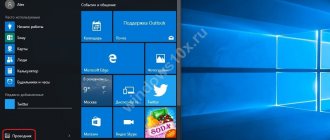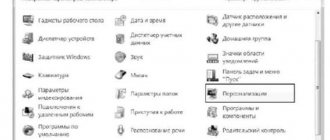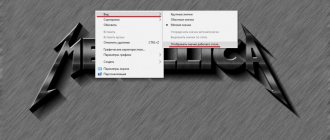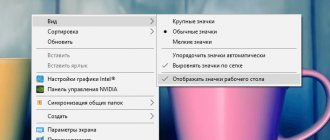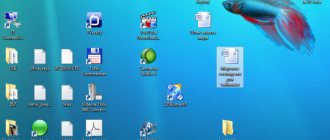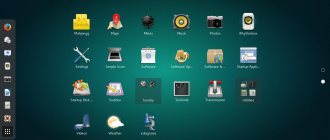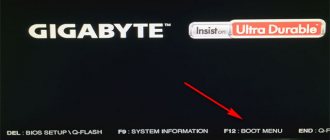» Operating Systems » Windows 7
Evgeny Opanasenko 12/17/2017
Many users are, to put it mildly, unhappy with the desktop performance for Windows Aero.
The fact is that the computer slows down very much and often all sorts of Aero design possibilities lead to the fact that instead of animation, the user sees only pictures that replace each other.
Of course, this only happens in the most extreme cases, but even slight slowdowns can be quite annoying.
What to do?
We will look at several methods that help solve the performance problem.
Contents:
- Why is everything slow?
- Disabling the theme completely
- Disabling some options
- What else can you do
Why is this happening?
Any graphics is a huge set of mathematical calculations that the computer must carry out before “coloring” a pixel in one color or another. The Windows Aero interface contains a large number of visual effects (translucency, 3D and much more) that are generated when manipulating windows (opening, closing, minimizing, and so on). All of these effects have system requirements that exceed those of some older computer games. And if the PC’s power is not enough, then it is not able to fully display all these effects, which is why freezes begin, skipping animation frames and many other things that hurt the eyes.
Windows Aero interface
On a note! This is especially true for netbooks, whose power is quite low.
Why does the Aero theme slow down your PC?
There are many different reasons for slowdowns in the Windows OS, and one of them may be the Aero theme, which is enabled by default in Windows (Vista, 7). It contains about two dozen visual effects to create a graphically rich Windows interface. Supports all of them requires a fairly powerful video card.
enabled by default in Windows (Vista, 7). It contains about two dozen visual effects to create a graphically rich Windows interface. Supports all of them requires a fairly powerful video card.
You can view the entire list of visual effects of the Aero theme in different ways. For example, in Windows 7 there is this method: “start” - “control panel” - “system”, on the left side of the screen click “advanced options”, then In the window that appears, select the “advanced” tab and click the “parameters” button.
Partially disabling visual effects
Not all effects from the list above greatly affect performance. Some of them significantly improve the appearance of the interface, but have a minimal impact on desktop performance. Therefore, it makes sense to still leave some effects.
To get started, go to the performance settings (the previous instructions described how to do this) and activate the “Special effects” checkbox. Then enable the following options by checking the box next to them:
- desktop composition;
- window and button display styles;
- thumbnails instead of icons;
- smoothing out font irregularities;
- saving taskbar thumbnails.
Activate the “Special Effects” checkbox, set the parameters, click “Apply” and “OK”
Then click “Apply” and “Ok” one by one to confirm the changes.
On a note! The above are only recommendations. You can turn on and off various visual effects yourself until you find the balance of appearance and performance that suits you.
Disabling subtle visualizations
To do this, you just need to turn off some visual elements, leaving only those that do not cause a noticeable decrease in performance, without losing the graphical “beauty” of this theme when it is completely turned off. Which effects should you turn off and which should you leave? The following picture answers this question:
Disabling items in this list is done by simply clicking on the corresponding checkbox. In this case, the “Special Effects” option is automatically installed. After disabling unnecessary visualizations, click the “Apply” button and close all windows. It is also advisable to restart your computer after this. You should not think that this technique will provide a sharp increase in desktop performance, since it still remains dependent on the capabilities of the video adapter, but an increase of 10-20% is quite possible.
If, as a result of all these manipulations, transparency disappears for some reason, then you should right-click on the desktop, select the “Personalization” option, then “Window Color”, check the “Enable transparency” checkbox and click “OK”.
Disabling background applications
Along with the ability to launch applications when the system boots, some programs continue to run in the background even when you are not using them.
If you want to maximize the speed of Windows 10, you need to disable applications that you don't need. This is done as follows:
- Open the Settings app.
- Go to the "Privacy" section.
- Go to the “Background Applications” subsection.
- Disable applications you don't need.
- Untoggle "Allow apps to run in the background" to disable the functionality of all Microsoft Store apps.
After following these steps, apps will not waste system resources when you are not using them.
This will speed up your computer. You can use the Settings app to manage apps from the Microsoft Store. If you have traditional desktop apps running in the background, you need to change their behavior within their own settings.
GPU scheduling hardware acceleration feature
In short, the hardware-accelerated GPU scheduling feature in Windows 10 is a fundamentally new design of how the Windows Display Driver Model (WDDM) works.
While Microsoft says users won't see any significant changes after activating it now, some believe the feature will eventually reduce input lag on low-end and mid-range processors. In theory, the hardware GPU acceleration feature in Windows 10 offloads most GPU scheduling tasks to a dedicated GPU-based scheduling processor, which should free up the CPU a bit and could potentially result in a small improvement in input latency.
How to increase computer performance on Windows 10: professional tips
- Be careful about what you install on your computer. Sometimes some programs do not connect together and they very often turn out to be antiviruses. Especially if there are two of them on the computer, otherwise the entire operating system may crash.
- Sometimes the problem may not be hidden in dangerous programs or even viruses, but in the contamination of the computer components themselves. You should carefully clean the PC from dust with a dry cloth. Try not to touch small parts. After cleaning, the computer runs faster and overheats significantly less.
- Keep in mind that performance improvements are not always good for your computer. For example, the “High performance” setting entails high battery consumption. This applies to laptop owners. It is better to use such functions on a computer that does not need to be charged.
- Reinstalling the operating system, as a rule, always has a good effect on the performance of the computer. Unwanted programs, those that you do not use, viruses that were undetected during scanning, or various applications that only slow down the operation of the system itself will be completely removed.
- Be sure to choose the right PC components. If something is chosen incorrectly, or, for example, the RAM does not match the data, and sometimes it is completely loaded. In this case, it is better to purchase new components.
- You can use special programs to clean unnecessary files, caches and other garbage. They increase the speed of the computer several times in all cases. The main thing is to download from a trusted source. And never forget to check the list of what the file cleaning program wants to remove!
- Updating drivers is a great help for your PC. Especially the update for the motherboard chipset. New versions are also relevant for other devices.
- Regularly scan your computer for viruses. It is best to be in the hands of a reliable antivirus. In this case, you will not risk losing all your data and information.
Instructions: changing the performance of the Windows Aero desktop
The ratings that the system gives you are initially stored on the hard drive, so you can very easily not only find out their values, but also replace them manually. You should go to the path: C:\Windows\Performance\WinSAT\DataStore. However, to change the actual odds, you need to improve your computer's performance. The operating systems Windows 7 and Windows Vista are more resource-intensive than their predecessors, so to ensure efficient operation, you can not only overclock the processor, RAM and video card, but also purchase new components, which will be a better choice.
How to increase computer performance on Windows 10: professional tips
- Be careful about what you install on your computer. Sometimes some programs do not connect together and they very often turn out to be antiviruses. Especially if there are two of them on the computer, otherwise the entire operating system may crash.
- Sometimes the problem may not be hidden in dangerous programs or even viruses, but in the contamination of the computer components themselves. You should carefully clean the PC from dust with a dry cloth. Try not to touch small parts. After cleaning, the computer runs faster and overheats significantly less.
- Keep in mind that performance improvements are not always good for your computer. For example, the “High performance” setting entails high battery consumption. This applies to laptop owners. It is better to use such functions on a computer that does not need to be charged.
- Reinstalling the operating system, as a rule, always has a good effect on the performance of the computer. Unwanted programs, those that you do not use, viruses that were undetected during scanning, or various applications that only slow down the operation of the system itself will be completely removed.
- Be sure to choose the right PC components. If something is chosen incorrectly, or, for example, the RAM does not match the data, and sometimes it is completely loaded. In this case, it is better to purchase new components.
- You can use special programs to clean unnecessary files, caches and other garbage. They increase the speed of the computer several times in all cases. The main thing is to download from a trusted source. And never forget to check the list of what the file cleaning program wants to remove!
- Updating drivers is a great help for your PC. Especially the update for the motherboard chipset. New versions are also relevant for other devices.
- Regularly scan your computer for viruses. It is best to be in the hands of a reliable antivirus. In this case, you will not risk losing all your data and information.
Checking the Performance Score
Windows OS has a special built-in program that evaluates the performance of various computer components from 1.0 to 7.9. The list of these components also includes desktop performance. Thus, you can try each of the described methods in turn and understand which of them brought the maximum effect. To do this, follow these steps:
- Right-click the “Computer” shortcut and click on “Properties”.
So, now you are familiar with several methods that will help you get rid of hangs when interacting with windows and folders. It is also recommended not to clutter the desktop with many shortcuts, as this also loads the system.
Disable apps from launching at boot
Many programs installed on a computer start when the operating system boots and work in the background unnoticed by the user. If you do not need these programs or need them occasionally, and your computer is not the most powerful, you need to save valuable system resources. Autorunning programs significantly slows down the Windows boot process. To disable auto-start of certain applications, do the following:
- Open the Settings app.
- Go to the "Applications" section.
- Click Startup.
- Click on the "Sort By" menu and select "Launch Impact".
- Disable unnecessary applications, especially those that have a large impact on startup.
- Restart your computer.
After completing these steps, the system will boot faster. How much faster depends on the disabled applications and your hardware components.

